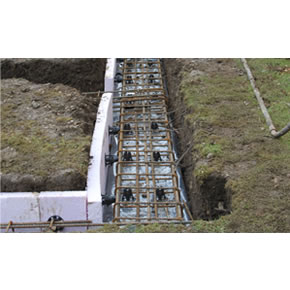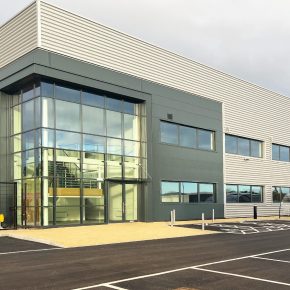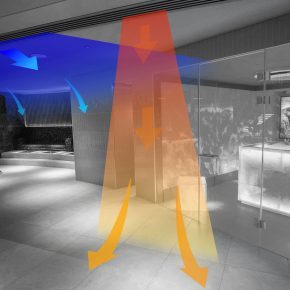
How to choose the right foundation for homebuilding
Since there are many different types of foundation on the market, it is important for property builders to identify the best solution before committing to one. Geobond has outlined several options for consideration.
When building a property or an extension, variables such as wind speed, soft ground and the closeness of drains or trees can affect what type of foundation you should use to build on.
Geobond has stressed the importance of choosing the right type for a successful project.
Strip foundation
Strip foundation is perhaps the most commonly used foundation to build properties throughout the UK.
Trenches must be dug to at least 150mm; they are then filled with concrete to create a border around the area of the property. The distance from the front face of the wall to the edge of the foundation should be equal to the depth of the foundation, providing it exceeds 150mm.
When laying a strip foundation, it is important to consider the proximity of foliage; the moisture used by trees, for example, will cause the ground to rise and fall. Chopping the tree down will encourage the ground to swell, affecting the drainage of the property.
Trench fill foundation
In comparison to strip foundation, trench fill foundation is thinner in size but thicker in concrete. Best used in chalk soils and clay, it is often preferred by self-builders.
Trench fill foundation must be used on stable ground to ensure that the home is adequately supported; as a high amount of concrete is required to fill the trench, there is no need to use bricks below the surface.
Engineered foundation
Engineered foundations often require a structural engineer to advise the best solution.
The most common engineered foundation involves building deeper trenches, filling them with more concrete and laying polystyrene sheets to help to prevent slipping.
If the trenches need to be dug deeper than 2.5m, a different kind of foundation will be required. Piling, for example, is particularly useful when building on water or damp soil. It involves building piles vertically into the ground and filling them with concrete; the foundation can then be laid.
Rafts can also be used as an alternative if the land is prone to flooding: a concrete raft, which is designed to float on the ground, will act as the foundation for the property.
Engineered foundation can be an expensive and time consuming option, but it is ideal for building on difficult ground.
Latest news

2nd April 2025
FIT Show 2025 Launches Innovative Marketplace Feature to Enhancing Value for Installers
FIT Show, the UK’s leading event for the window, door, flat glass, hardware, and roofing industries, is excited to announce the launch of a brand new Marketplace feature at its upcoming 2025 event (Birmingham NEC, 29 April – 1 May).
Posted in Architectural Ironmongery, Articles, Building Industry Events, Building Industry News, Building Products & Structures, Doors, Exhibitions and Conferences, Glass, Glazing, Hand Tools, Innovations & New Products, Plant, Equipment and Hire, Power Tools, Restoration & Refurbishment, Retrofit & Renovation, Roofs, Seminars, Training, Windows
2nd April 2025
Hi-spec deployment of EJOT Colorfast at new Birmingham logistics park
EJOT Colorfast fasteners have been used extensively in the construction of eight new high-specification warehousing and logistics buildings at the Urban 8 Logistics Park in King’s Norton, Birmingham.
Posted in Articles, Building Industry News, Building Products & Structures, Building Systems, Case Studies, Facades, Restoration & Refurbishment, Retrofit & Renovation, Roofs, Walls
2nd April 2025
SWA member delivers ‘fresh Hope’ for university’s Sustainable Building department
A detailed contract to restore an iconic Art Deco building in the heart of Birmingham’s Jewellery Quarter was carried out by Steel Window Association member, The Window Repair Company (Northwest) Limited.
Posted in Articles, Building Associations & Institutes, Building Industry News, Building Products & Structures, Building Systems, Case Studies, Glass, Glazing, Restoration & Refurbishment, Retrofit & Renovation, Steel and Structural Frames, Sustainability & Energy Efficiency, Windows
1st April 2025
Gilberts Takes Thermal Comfort to New Heights
Gilberts Blackpool is continuing to build on its reputation as a pioneer with the unveiling of ThermaAstute™ – the most extensive range of thermally sensitive diffusers in the market.
Posted in Air Conditioning, Articles, Building Industry News, Building Products & Structures, Building Services, Facility Management & Building Services, Heating, Ventilation and Air Conditioning - HVAC, Innovations & New Products, Restoration & Refurbishment, Retrofit & Renovation, Sustainability & Energy Efficiency
 Sign up:
Sign up: